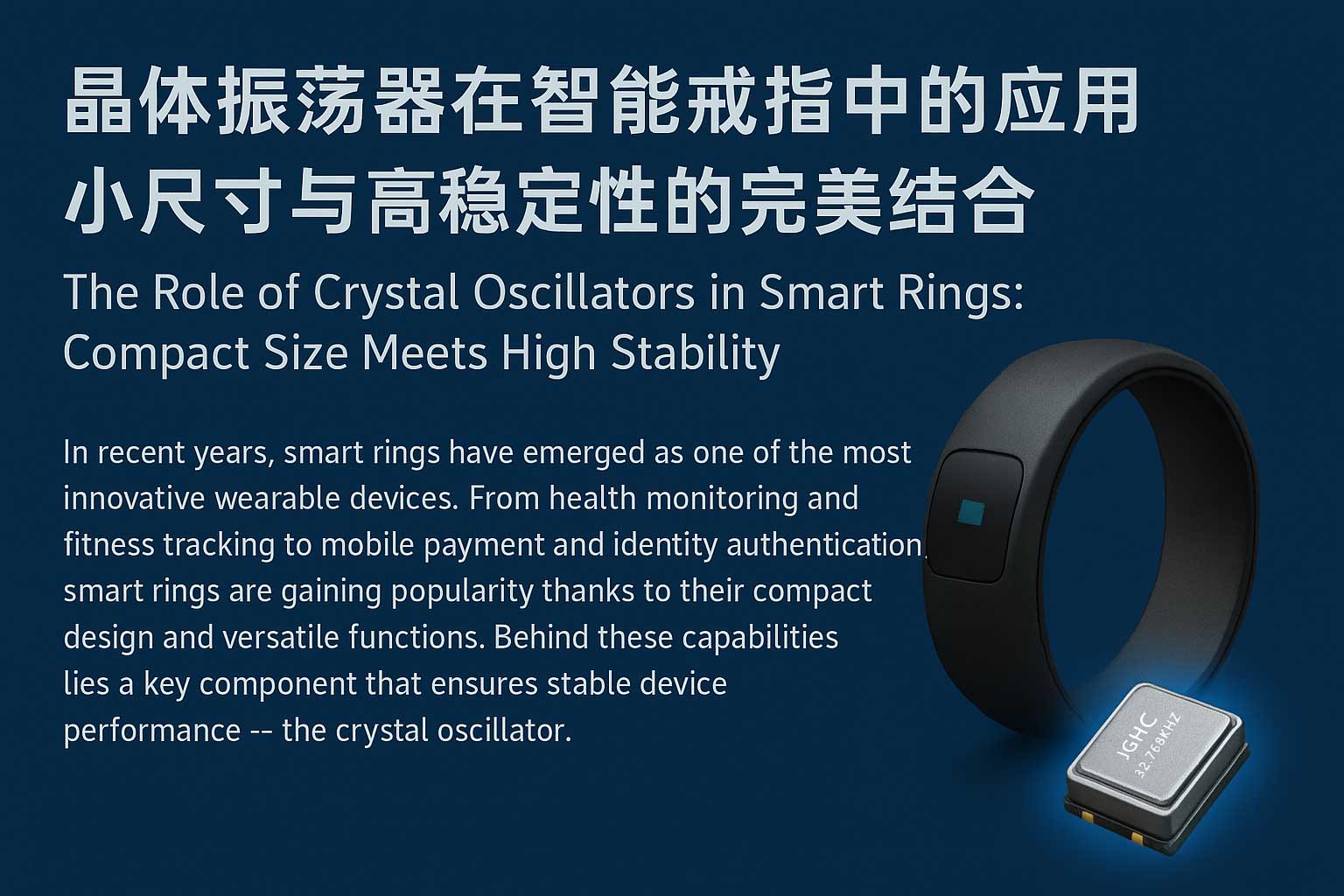The Role of Crystal Oscillators in Smart Rings Compact Size Meets High Stability
In recent years, smart rings have emerged as one of the most innovative wearable devices. From health monitoring and fitness tracking to mobile payment and identity authentication, smart rings are gaining popularity thanks to their compact design and versatile functions. Behind these capabilities lies a key component that ensures stable device performance — the crystal oscillator.

Crystal oscillators provide precise frequency and timing references for smart rings, making them essential for reliable operation. Their main applications include:
1.Stable Wireless Communication:
Smart rings typically connect to external devices via Bluetooth or NFC. High-precision crystal oscillators ensure stable communication frequencies, minimizing signal drift and improving connectivity.
2.Sensor Data Synchronization:
Sensors for heart rate, temperature, and motion require consistent sampling frequencies. Crystal oscillators deliver accurate clock signals, enabling precise data acquisition.
3.System Clock for MCUs:
The MCU or SoC inside the smart ring relies on a stable system clock. Crystal oscillators provide the core timing reference to ensure smooth and efficient system performance.
4.Low Power Consumption & Battery Life:
With limited battery capacity, smart rings benefit from low-power crystal oscillators such as 32.768 kHz RTC crystals, which enable precise timekeeping while extending standby duration.
5.Miniaturized Packaging:
Due to the compact design of smart rings, crystal oscillators are often integrated in ultra-small packages (e.g., 1.6×1.2 mm), balancing performance with space-saving requirements.As smart rings continue to evolve, the demand for crystal oscillators with smaller size, lower power, and higher stability will keep growing. JGHC Crystal will remain committed to delivering high-quality, customized frequency solutions, empowering innovation in the wearable technology market.
